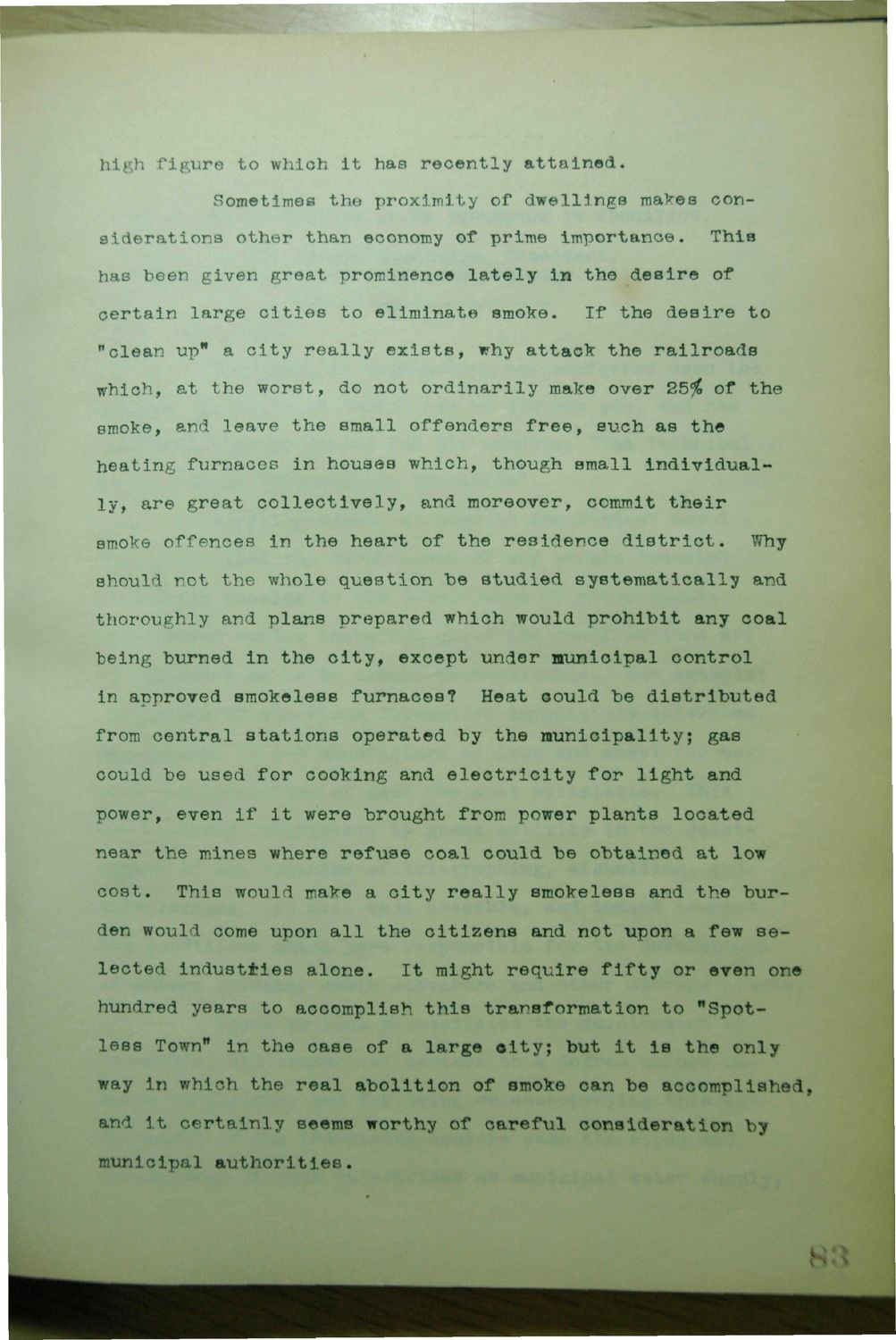| |
| |
Caption: Dedication - Transportation Building Dedication Addresses
This is a reduced-resolution page image for fast online browsing.

EXTRACTED TEXT FROM PAGE:
high figure to whioh it has recently attained. Sometimes the proximity of dwellings makes considerations other than eoonomy of prime importance. This has been given great prominence lately in the desire of certain large cities to eliminate smoke. If the desire to "clean up" a city really exists, why attack the railroads whioh, at the worst, do not ordinarily make over 25$ of the smoke, and leave the small offenders free, s*uch as the heating furnaces in houses which, though small individually, are great collectively, and moreover, commit their smoke offences in the heart of the residence district. Why should not the whole question be studied systematically and thoroughly and plans prepared whioh would prohibit any ooal being burned in the oity, except under municipal control in approved smokeless furnaces? Heat could be distributed from central stations operated by the municipality; gas could be used for cooking and electricity for light and power, even if it were brought from power plants located near the mines where refuse ooal could be obtained at low cost. This would make a oity really smokeless and the burden would come upon all the oitizens and not upon a few selected industties alone. It might require fifty or even one hundred years to accomplish this transformation to "Spotless Town* in the case of a large eity; but it is the only way in whioh the real abolition of smoke can be accomplished, and it certainly seems worthy of careful consideration by municipal authorities. *a
| |